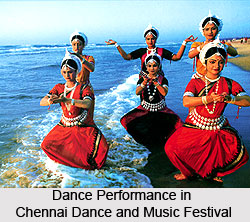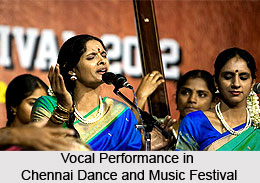 Chennai dance and music festival is organised every year to bring together the community of performers, exponents and the art admirers. This Indian dance festival offers an encouraging atmosphere, aimed at fostering a creative exchange of ideas and provides opportunities to the young and the talented. The foremost endeavour of the festival is to provide a wide spectrum for dancers. Furthermore, the artistes and the audience share their knowledge and inspiration through the shows and performances. Dance is a medium that venerate the classical tradition of the state.
Chennai dance and music festival is organised every year to bring together the community of performers, exponents and the art admirers. This Indian dance festival offers an encouraging atmosphere, aimed at fostering a creative exchange of ideas and provides opportunities to the young and the talented. The foremost endeavour of the festival is to provide a wide spectrum for dancers. Furthermore, the artistes and the audience share their knowledge and inspiration through the shows and performances. Dance is a medium that venerate the classical tradition of the state.
History of Chennai Dance and Music Festival
Chennai dance and music festival has a long history. It was earlier known as `Margazhi festival of Dance and Music` which was started early back in 1927. This festival was commenced to memorialize the anniversary of Madras Music Academy. Margazhi is a Tamil month, corresponding to the month of December. This Tamil month is regarded as a sacred period by the South Indian Hindus. South Indian classical music or Carnatic music is intended with devotion. The devotional aspect of the South Indian music inspired the organisers to arrange the dance festivals in a sacred month.
 Features of Chennai Dance and Music Festival
Features of Chennai Dance and Music Festival
Chennai dance and music festival is considered to be a festival of immense importance with religious bent. This month long festival is truly classical in nature and is carried out during the middle of December till the middle of January. The festival is held at several venues around the city and no particular venue is fixed for the dance festivals. Various `sabhas` of the city organise these festivals in the auditoriums, well-known temple premises and heritage bungalows. The festival introduces month long showcase of dance and music extravaganza with performances of eminent artistes from various parts of the country. The festival is also known as `December Season` and foregrounds the talents of the 2000 artists participating in over 300 concerts. The performances are interwoven with vocal and instrumental music as well as solo and group dance. The renditions showcase the faculty of the upcoming and leading artistes from over the country.
Chennai being a capital city of Tamil Nadu is situated in the southern part of India. It presents a splendid and refined culture as well as glorious history. The culture is reflected thorough its performing arts. The ancient dance forms that originated in the city are mostly classical in nature. Thus, Chennai can be aptly called the land of classical dances. The oldest classical styles, such as Bharatnatyam, have been nurtured in the temples. This classical dance is associated with mythology, philosophy and spiritual beliefs of the Hindu culture. These factors represent the celebration of Chennai dance and music festival.



















